This is an experiment in my ongoing project to make clear ice. I've figured out a way to do it using an Igloo cooler. This experiment is an attempt to make clear ice without one.
A long time ago, I tested the theory that freezing, thawing, and refreezing water makes clear ice blocks. After 13 tries I determined that it refreezing water does not make clearer ice.
However, it recently occurred to me that I could test out something else. If we take just the clear part of ice (leaving behind the cloudy, air-rich stuff), melt it and refreeze it, will the new ice be clear?
A bar in San Francisco refreezes their Kold-Draft cubes. One bartender told me he thought it makes clearer ice than with just tap water, but still not completely clear.
If this experiment works, then someone anyone could refreeze small bits of clear ice into large blocks. Efficient? Nope. But interesting.
(Oh, and long story short: this experiment was inconclusive. Don't want to make you read if you're not into it.)
Anyway, step one was to make clear ice, as I do using the Igloo cooler method. I made two partial blocks of ice. I let the water freeze in the cooler, then knock off the thin skin that forms around the bottom of the cooler (full of water).
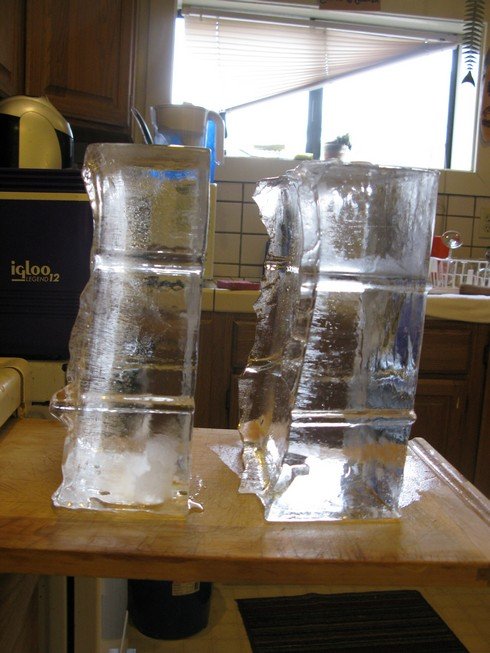
Then I took these two clear slabs, broke them into large chunks, and put them into the cooler to melt.
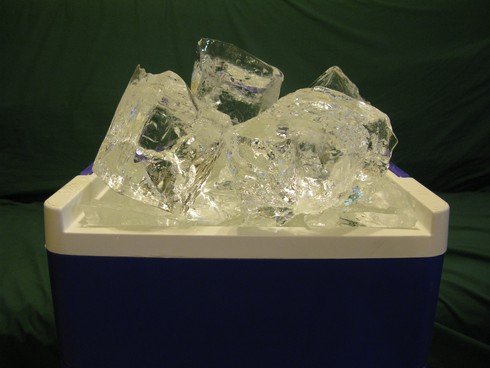
After it melted, I refroze it.
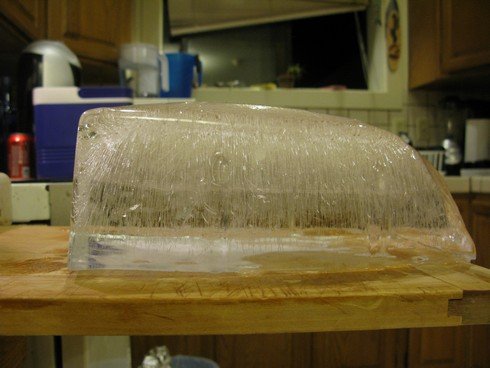
The ice in the picture above is upside-down from how it was in the cooler. Here's a closeup.
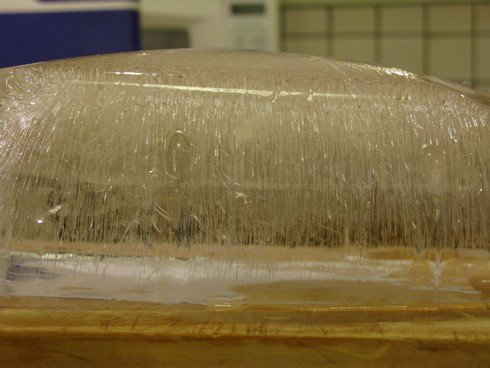
At first view, it looks a little cloudy in the middle of the bloc- but I think that's because I had to move my refrigerator a couple of times during this process and jostling the container does seem to make cloudier ice.
Looking just at the cloudy part at the bottom end (top in the picture above), I can't really say whether it's less cloudy than it is with regular tap water. This experiment is inconclusive.
My theory is that as the water cools down or warms up to room temperature it reabsorbs a standard amount of air, and this experiment won't work. However:
If I repeat this experiment (and I probably will), I should:
- Make the clear ice as normal, but not break up the slab into chunks. This saved time but probably adds air.
- Use more refrozen water in the cooler when refreezing. Here is was a little too hard to tell what percentage of ice was cloudy, so I could not compare it with the time I did this experiment with regular water.
The icesperiments continue!
An index of all of the ice experiments on Alcademics can be found here.
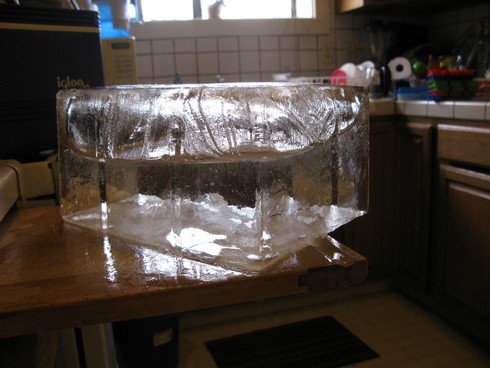
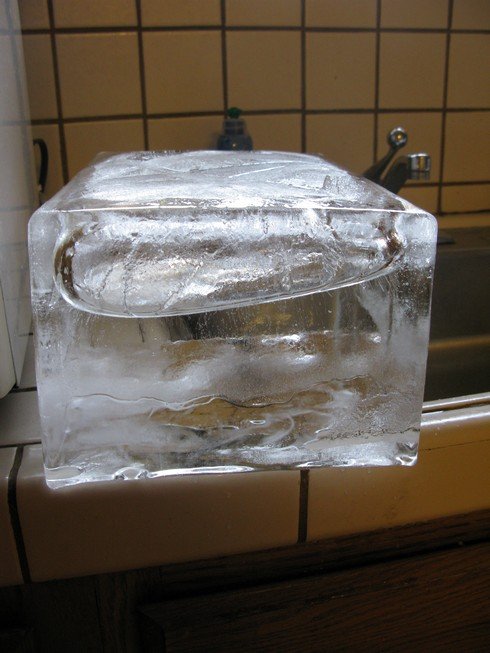












Leave a Reply